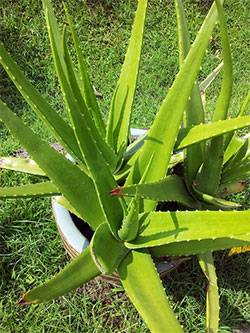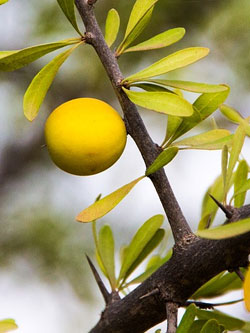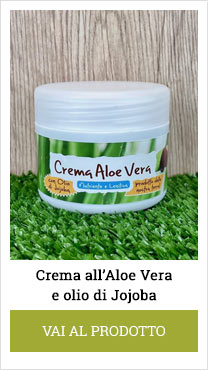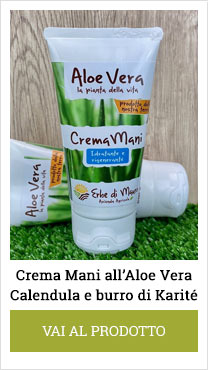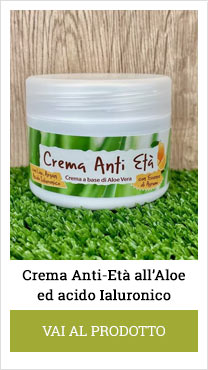
Winter is the worst season for our skin, in fact it is especially during the cold season that it tends to dry out and crack.
But what exactly happens to our skin when it is cold?
The surface of the skin contains a lipid film (i.e. a fat film). This film will allow water to be retained in the upper layers of the skin for a “barrier” effect and therefore to keep the skin hydrated and soft .
The problem is that in winter, when it’s cold, the air is drier. And our skin too, because it lets out more water. As a result the skin becomes rough, tight and more prone to irritation and cracking.
The parts most prone to drying out are mainly the skin of the hands, feet, legs and face.
Also, as we age, the sebaceous glands that produce much of the skin’s fat become less active. So in the skin of the elderly the lipid film is compromised and consequently also the hydration.
For this reason, the more we age, the greater the importance of protecting our skin.
How to fight dry skin during the winter?
First of all, prevention. Of course it is very important to cover yourself well, but it is not enough. It is also important to avoid all those behaviors that could damage and irritate the skin .
Eg:
- repeated bathing in the sea, or in the pool,
- regular use of too aggressive detergents,
- drink a little water,
- excessive exposure to heat pumps and heaters.
These are all small steps we can take to prevent our skin from losing moisture. However, in case it is too late for prevention, there are natural moisturizing and nourishing remedies that can solve this problem. Let’s see which ones.
Aloe Vera
Aloe vera gel is considered a universal remedy for both health and beauty. In addition to being rich in water, aloe gel contains many vitamins (mainly A, E and the B vitamins) and mineral salts (phosphorus, potassium, calcium, chlorine, iron, zinc, etc.).
Furthermore, the Aloe gel is rich in acemannan, a polysaccharide that has soothing, anti-inflammatory and healing properties. So the application of the Aloe gel on the skin not only promotes hydration, but also helps to extinguish any irritation and to promote the scarring and healing of small wounds and cracks.
Vegetable oils
To consolidate the skin’s lipid barrier, nourish it and slow down the loss of water, vegetable oils are excellent. Among the many available on the market, we especially recommend:
Jojoba oil
The Jojoba , botanical name Simmondsia chinensis, is a very popular plant in cosmetics. It is a bush native to the Sonoran and Mojave desert in California and contiguous Mexico. The oil obtained from the seeds of this plant has moisturizing and nourishing properties. It works by retaining water in the cells of the epidermis to protect it from dehydration and penetrates deeply without leaving a greasy film. For this reason it is also applicable in people with basically oily skin.
In addition, it softens and protects the skin to make it softer. Its antioxidant action gives it a regenerating, anti-wrinkle and anti-aging power that allows the skin to be smoother, firmer and to maintain its elasticity.
Try our Moisturizing Cream with Aloe Vera and Jojoba >>
Shea Butter
Rich in saturated and unsaturated fatty acids, vitamins E, D, F and A, shea butter helps nourish all skin types, even the driest. Deeply moisturizes the superficial layers of the epidermis, softens, revitalizes and beautifies damaged skin (cracks, dryness, flaking). Shea butter is also used against accelerated skin aging thanks to its cell regeneration qualities linked to phytosterols and fatty acids.
Try our Hand Cream with Aloe Vera, Shea Butter and Calendula >>
Argan oil
Argan oil is the oil extracted from the seeds of the Argania spinosa plant, endemic to the southern area of Morocco. Thanks to its high concentration of vitamin E, omega 6 and 9, argan oil is a concentrate of active ingredients that nourish, restructure and soften the skin. Not only is Argan oil a very effective anti-aging treatment. It prevents cell aging, hydrating and nourishing the tissues , and eliminates age spots. For this reason it is an ingredient almost always present in anti-aging creams.
Try our Anti-Aging Cream with Aloe Vera, Argan oil, Linseed oil and Hyaluronic Acid >>
Marigold oil
Calendula oil is a medicated oil obtained by macerating calendula flowers in vegetable oils (usually sunflower oil is used). In addition to being used as a functional ingredient in the preparations of many cleansers and creams, Calendula oil can be used pure to treat dry skin and any type of skin irritation. In fact, this oil has a strong anti- inflammatory, soothing and moisturizing action and is particularly suitable for dry, red and irritated skin . Among the natural products it is the most suitable for treating very sensitive areas of the body, or delicate skin, such as those of babies.
The importance of nutrition
The health of our skin also and above all depends on our diet. In fact, we need a constant supply of fatty acids, vitamins and mineral salts to keep it healthy.
Important details are:

- Vitamin C : Vitamin C in addition to being a powerful antioxidant, is involved in the production of collagen which supports the fibers of the skin and gives it a firm appearance. Vitamin C is found in vegetables (lemons, oranges, grapefruits, strawberries, kiwis, pineapples, etc.) and in vegetables, particularly in crucifers (rocket, cabbage, broccoli, cauliflower, etc.) but also in tomatoes, peppers red and green, in lettuce, spinach, etc. In Europe, the fruit that has the highest concentration of vitamin C are the rosehip berries , with a content that can reach 2200 mg per 100g of berries. For comparison, in oranges of the same weight, we find only 53 mg of vitamin C.
- Vitamin E: it is the most important antioxidant with lipoprotective action, that is, it protects fats from oxidation, reducing cellular aging. It is found mainly in fatty foods, such as vegetable oils (sunflower oil, grapeseed oil, soybean oil), avocado, hazelnuts, walnuts and to a lesser extent in butter and eggs.
- Vitamin A (retinoids and carotenoids): counteracts the formation and activity of free radicals, the main responsible for degeneration, also fights the signs of premature aging, especially those related to photodamage and caused by exposure to UV rays, such as wrinkles, furrows and sunspots. Finally, vitamin A allows the correct life cycle of epithelial cells, which involves a constant renewal of the skin layer with new and healthy cells. Vitamin A is readily available in all red-orange foods, such as carrots, red and purple potatoes, red peppers, apricots, berries, watermelon, etc. Special mention for Goji berries which are extremely rich in this vitamin. Cyanobacterial microalgae, such as Spirulina and Klamath are also excellent plant sources of vitamin A.
- vitamin F (fatty acids): essential fatty acids, such as linoleic acid (omega 6), linolenic acid (omega 3) and arachidonic acid, which represent the constituents of the cell membrane are called vitamin F. Their deficiency destabilizes ionic transport through the cell membrane. Vitamin F is known in cosmetics as a “skin vitamin” due to its exceptional eudermic properties. In fact, it favors the integrity of the skin and hair. Its deficiency causes symptoms of dermatosis, such as acne, eczema, chapping, dry and rough skin, as well as brittle nails, dandruff, brittle and dull hair. The fatty acids that make up the vitamin we find them particularly in nuts (almonds, walnuts, hazelnuts, flax seeds , chia seeds, etc.) and in vegetable oils.
- Water : Of course, to stay hydrated it is important to drink plenty of water and eat foods that are rich in water, such as vegetables and soups.
Beware of petrolatum in cosmetics
The petrolatum are substances arising from petrolo, which are commonly used in cosmetics and products for the hygiene of the body. They have the advantage that they are very cheap, but unfortunately they have many contraindications for both your skin and the environment.
The use of these creams, at first glance, seems to give benefits.
In fact, they create a real protective film on the skin , which prevents dehydration by preventing the water present in the cells from evaporating. Furthermore, their texture makes the skin appear smooth and silky.
However, this is only a momentary sensation , as unlike vegetable oils, these substances do not nourish the skin, but simply cover it with an oily layer .
However, their filming characteristic is also one of their biggest defects: in fact they prevent not only water from coming out, but also oxygen from entering , interfering with normal skin respiration and allowing microorganisms and bacteria to proliferate beyond. under their protective film.
In the long run, this mechanism damages the skin and promotes the formation of blackheads, pimples and other imperfections.
Among the ingredients you will find these substances listed with the following names in English:
- Paraffinum liquiduum / Paraffin.
- Microcrystalline Wax / Microcrystalline Wax.
- Vaseline.
- Mineral oil (mineral oils)
- Petrolatum.
I would add that these are all substances that contribute to polluting our environment. So limiting its use , when there is a viable alternative, should be in everyone’s interest.
We should try, in making our choices, to always act in the interest of the environment and our health.
Related products
NB : All information published on this site is informative and should not be considered as advice, or medical prescriptions, or other.

